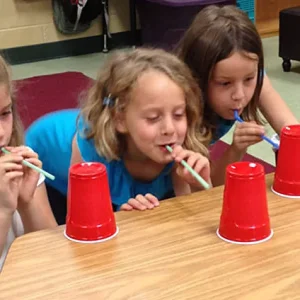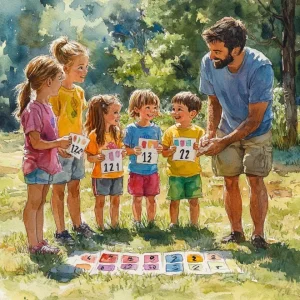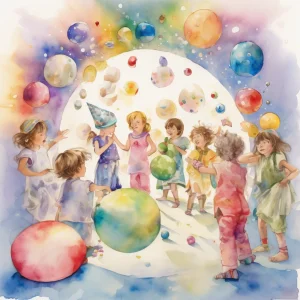Activity
Similar Activities
Enchanted Tea Party Adventure: A Magical Journey
Children’s Age: 3 years
Activity Duration: 10 – 15 minutes
Join us for a Magical Tea Party Adventure! Enhance your child's play skills, social-emotional growth, and language abilities through a whimsical tea party experience. Gather teacup…
Activity Duration: 10 – 15 minutes
Empathy Tales: Digital Storytelling Journey
Children’s Age: 6–10 years
Activity Duration: 15 minutes
"Digital Storytelling with Empathy" is a creative activity for children aged 6 to 10, focusing on empathy, self-regulation, and language skills using digital tools. With a tablet o…
Activity Duration: 15 minutes
Musical Freeze Painting: A Creative Dance Adventure
Children’s Age: 3 years
Activity Duration: 10 – 20 minutes
An engaging activity combining painting with musical freeze dance to promote creativity and play skills.
Activity Duration: 10 – 20 minutes
Outdoor Tea Party and Fix-it Fun for Toddlers
Children’s Age: 2–4 years
Activity Duration: 10 – 25 minutes
Let's create a fun Outdoor Tea Party and Fix-it Station for kids aged 1 to 3. Set up a table and chairs, play tea set, pretend tools, household items for fixing, a picnic blanket, …
Activity Duration: 10 – 25 minutes
Whimsical Cup Blow Race for Kids
Children’s Age: 4–6 years
Activity Duration: 5 – 10 minutes
The Cup Race Challenge activity is designed to boost teamwork, fine motor skills, and problem-solving in children. You'll need plastic cups, straws, a table, and masking tape to cr…
Activity Duration: 5 – 10 minutes
Musical Journey Through Time and Space - Instrument Exploration
Children’s Age: 3–4 years
Activity Duration: 15 minutes
Embark on a creative musical journey with children aged 36 to 48 months to boost their communication, self-care, and play skills. Use household items as instruments, set up a perfo…
Activity Duration: 15 minutes
Cultural Photo Exploration: World Wonders Journey
Children’s Age: 6–10 years
Activity Duration: 20 minutes
Embark on the "Cultural Photo Exploration" activity to boost children's play skills, cultural awareness, and academic development through an outdoor photography journey. Choose a d…
Activity Duration: 20 minutes
Starry Skies: Rocket Launch Adventure
Children’s Age: 6–10 years
Activity Duration: 25 minutes
"Rocket Launch Adventure" is an outdoor activity that engages children in a fun and interactive experience while promoting communication skills, play skills, and introducing basic …
Activity Duration: 25 minutes
Dance and Move Name Game: Expressive Play
Children’s Age: 3–4 years
Activity Duration: 5 – 10 minutes
The "Dance and Move Name Game" activity combines play, dance, and language skills for children's development. Set up an open dance space with name tags for each child and upbeat mu…
Activity Duration: 5 – 10 minutes
Harmony of Motion: Musical Sports Relay Race
Children’s Age: 6–8 years
Activity Duration: 15 – 30 minutes
The "Musical Sports Relay Race" activity fosters teamwork, cooperation, and sportsmanship in children through an exciting outdoor game blending sports and music elements. Kids will…
Activity Duration: 15 – 30 minutes
Whimsical Numbers Adventure: Number Hunt Relay
Children’s Age: 3–5 years
Activity Duration: 15 minutes
The "Number Hunt Relay" activity is designed for children aged 3 to 5 to have fun while developing play skills and learning basic number concepts. With number cards, markers, and a…
Activity Duration: 15 minutes
Imaginary Adventures: Mini Bowling Feelings Story Game
Children’s Age: 2–5 years
Activity Duration: 10 minutes
An engaging activity promoting sensory development, creativity, reading, and storytelling.
Activity Duration: 10 minutes



























